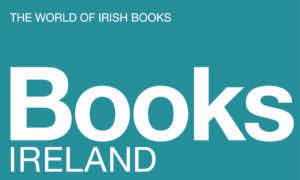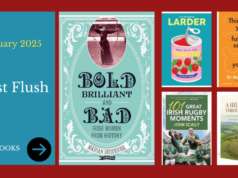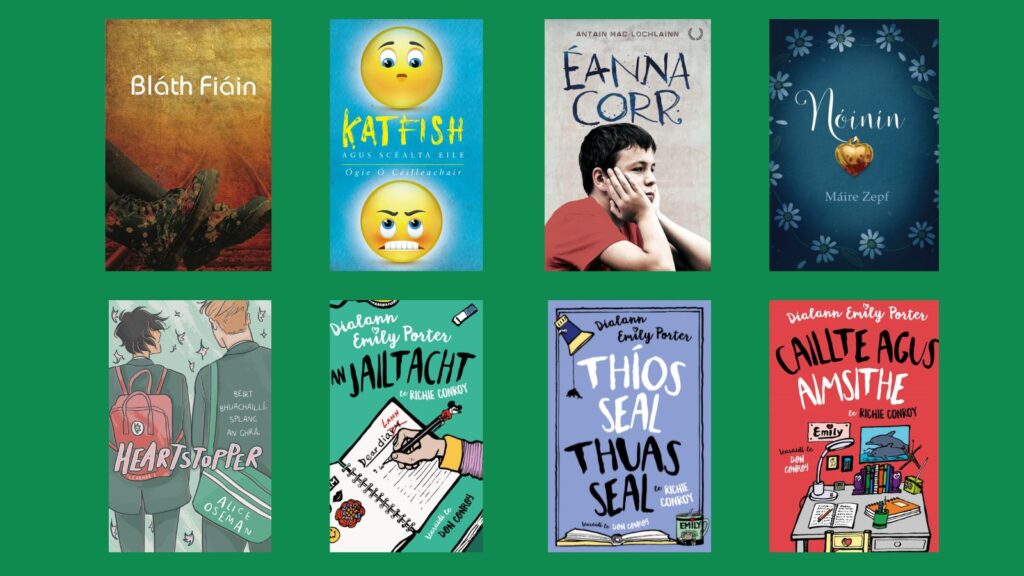
Coming of age, at every age – YA novels as Gaeilge
by Úna Nic Cárthaigh
The Young Adult reading category is generally defined as targeting readers aged 12 – 18 years. While genres within this category can vary from fantasy and dystopia to historical fiction and mystery, the underpinning themes are constant.
So where do Irish language books stand in the YA novel stakes?
Coming-of-age themes such as first love, breakups of friendships and foundations of new ones, death, school and bullying, family dynamics, the exploration of sexuality, real-world problems and marginalised groups are the backbone of those awkward and emotionally charged years and so form the backbone of YA novels. So where do Irish language books stand in the YA novel stakes?
YA novels as Gaeilge have been around for a long time – some of you may recollect reading about the antics of rogue teenager Jimín Mháire Thaidhg (or ‘Jimeen’ in the anglicised version) at school. The author Pádraig ‘An Seabhac’ Ó Siochfhradha wrote this coming-of-age story full of humour and mishaps about a rebellious boy who seriously questioned and challenged the people of authority in his life, in 1919.
Cathal Ó Sándair, one of the most prolific writers in the Irish language, wrote over one hundred detective and adventure novels for teens from the 1940s to the 80s. In the meantime, the likes of Áine Ní Ghlinn, Ré Ó Laighléis, Áine Uí Fhoghlú, Alan Titley, Éilís Ní Dhuibhne, Celia de Fréine and Máire Uí Dhufaigh have carried the torch in writing for this age group in Irish.
Looking at the past five years in particular, YA novels in Irish have gone from strength to strength, modernising their content and language style to reflect the lives of today’s teenagers.
Áine Ní Ghlinn, Ré Ó Laighléis, Áine Uí Fhoghlú, Alan Titley, Éilís Ní Dhuibhne, Celia de Fréine and Máire Uí Dhufaigh have carried the torch in writing for this age group in Irish
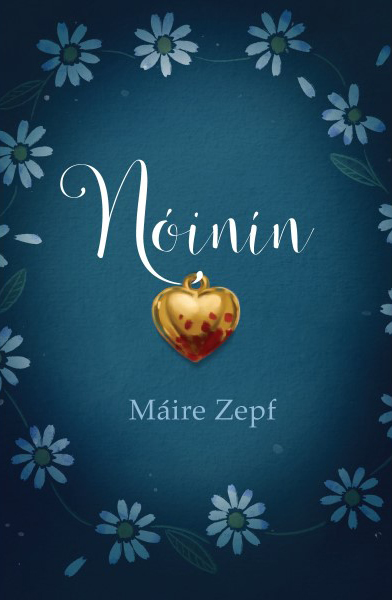
Verse novel Nóinín by Máire Zepf (Cois Life), which won the KPMG / Children’s Books Ireland Book of the Year Award in 2020, was praised for its brave and compelling depiction of the dangers of social media and online dating. It is a dark story featuring the grooming of a teenage girl followed by a shocking crime, beautifully told in poetic verse with references to Irish myths and fairytales throughout.

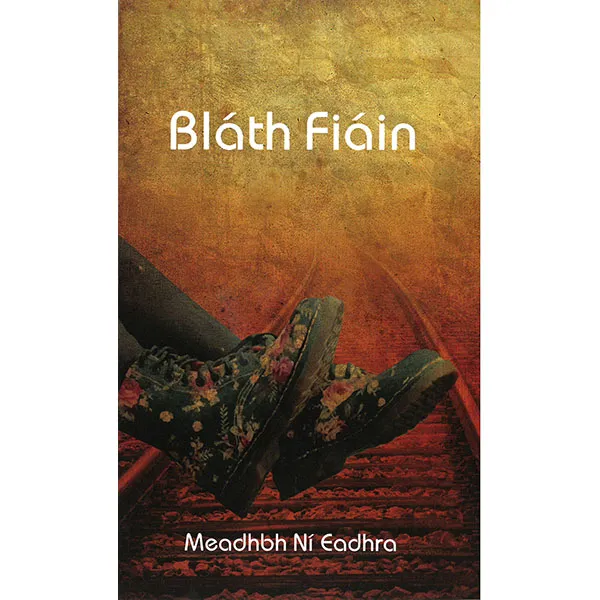
Ógie Ó Céilleachair, whose novel Cúpla has featured on the Junior Cert syllabus for many years, released Katfish and Other Stories (Cló Iar-Chonnacht) in the same year. This short story collection features themes of death, bullying, online relationships and false identities.
Méadhbh Ní Eadhra’s Bláth Fiáin (Cló Iar-Chonnacht, 2023) follows three Galway teenagers as they navigate love, friendship, online bullying and alcoholism when a pivotal moment changes everything as they prepare to celebrate their Junior Cert results. The colloquial Irish and contemporary songs mentioned throughout set a suitably modern tone to this story about identity and resilience.
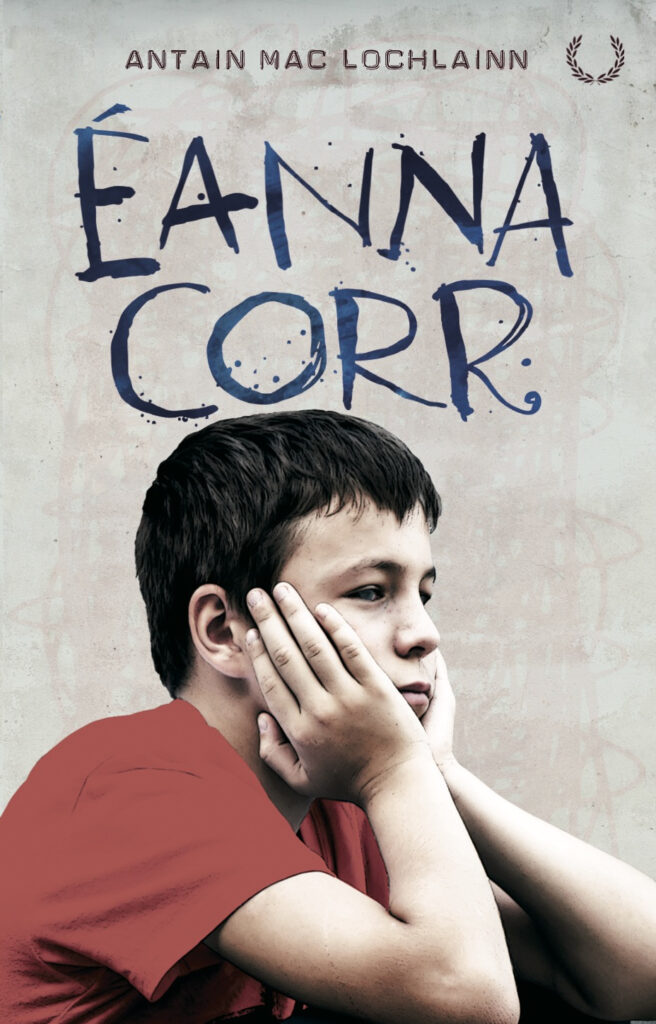
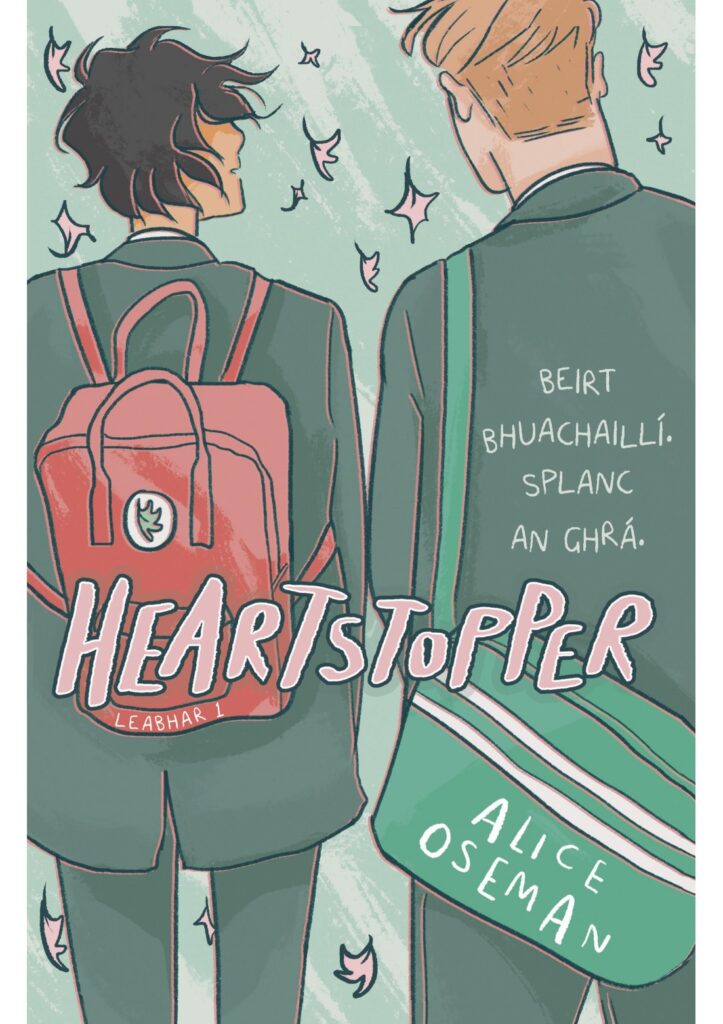
Éanna Corr by Antain Mac Lochlainn (Leabhar Breac, 2024) describes the harsh realities of being marginalised and the feelings of loneliness that come with bullying. It is also about the importance of courage and resilience, the power of friendship and staying true to yourself.
There was cause for celebration this year as Alice Oseman’s hugely popular Heartstopper was translated to Irish by Eoin McEvoy (Futa Fata, 2024). Readers now have the pleasure of following Nick and Charlie’s love story and their ‘splanc an ghrá’ as Gaeilge in the refreshing, quick-paced graphic novel.
It may be that the exploration of identity that is so central to YA stories is still as relevant and important to adults
However, YA has also grown in popularity among adult readers, with Publishers Weekly citing that 55% of YA readers are adults. Apart from being entertaining and quality reads, it may be that the exploration of identity that is so central to YA stories is still as relevant and important to adults and that we are indeed coming of age, at every age.
Another factor may be that nostalgia is a having a serious moment in culture and readers are seeking comfort in the familiarity of their younger years. Millennials are seeing the next generations buy Furbys, watch the Mean Girls reboot, take photos with a polaroid camera, listen to music on vinyl, play retro video games and grow mullets. That connection that we crave to the past, to reliving memories and cultural experiences has been coined ‘Nowstalgia’.
Cue Emily Porter.
Delighted to add herself to the literary icons with her namesake, Emily Brontë and Emily Dickinson, Emily Porter’s diary style books chronicle the life of an Irish teenager growing up in the 90s. Author Richie Conroy describes them as a ‘love letter to the 1990s‘ and says that, as someone who loved reading the likes of The Secret Diary of Adrian Mole, this is the type of book he would love to have read growing up.
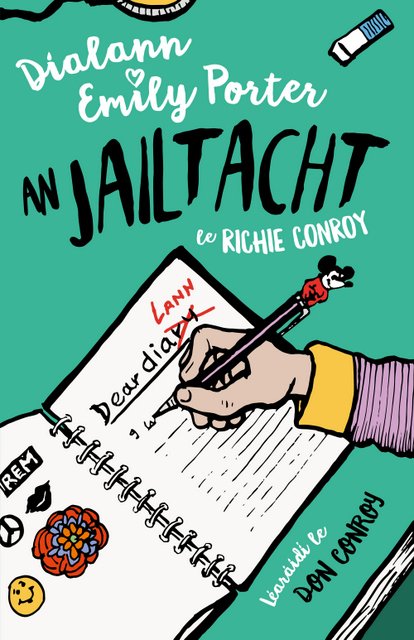
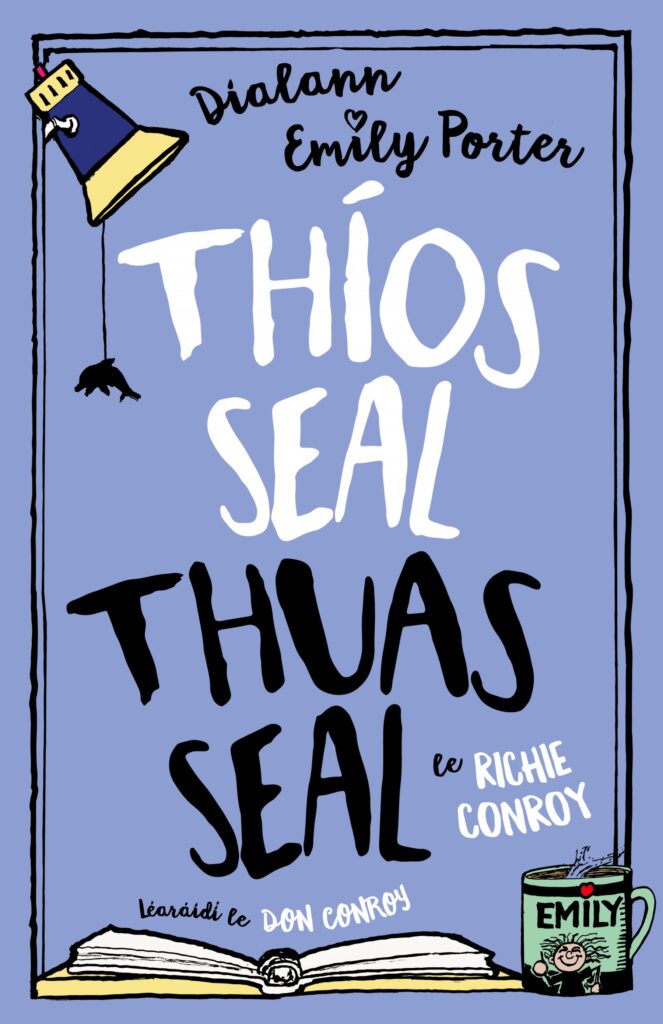
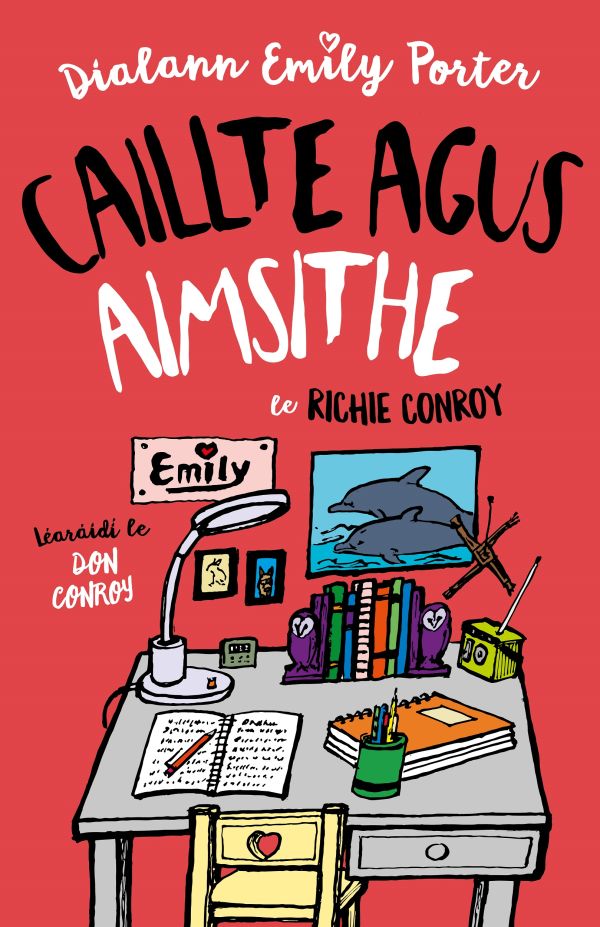
The first book in the Emily Porter series is the very clever An Jailtacht, set in the summer of 1994. It starts in English and gradually features more and more Irish as Emily acquires the language during her Gaeltacht experience.
The second book Thuas Seal, Thíos Seal shows Emily struggling with boyfriend and friend problems in Transition Year in school. The third instalment, Caillte agus Aimsithe, which has just been published by Leabhair Comhar, shows Emily’s life in 1997 – the year she completes her Leaving Cert and leaves for college.
Think Reeling in the Years meets Oh My God What a Complete Aisling and The Secret Diary of Adrian Mole
A lot happens for Emily in this pivotal year in her life: as she juggles studying for the Leaving Cert with being on the Debs committee, she is also coping with the loss of a family member. Throw into the mix her first holiday abroad with friends, CAO applications, getting a part-time job, finding love and you have a jam-packed 200 pages of the often-hilarious internal musings of a teenager. Think Reeling in the Years meets Oh My God What a Complete Aisling and The Secret Diary of Adrian Mole.
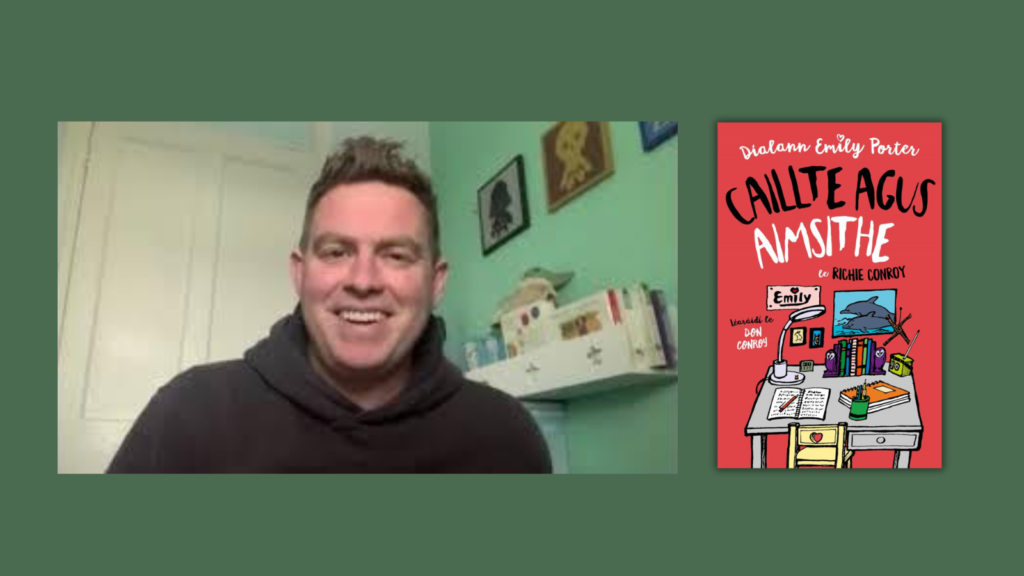
The diary entries are interspersed with CVs, letters, AOL instant messages (remember those?!), notes and study timetables which feature vital slots for watching Neighbours and Home and Away. There are black and white illustrations of the Snake game on a Nokia 3310 and a VHS tape from Xtravision to add to the nostalgia.
Cultural touchstones are littered throughout: the release of Harry Potter, Push Pops and Frosties, the impeachment of Bill Clinton, the deaths of Mother Theresa and Princess Diana, legalising divorce, cloning Dolly the sheep and many film titles from that year. There are also quintessentially Irish references to the Modh Coinníollach in the oral exam and lighting candles at Mass for good luck.
While this is a YA novel, aimed at 15+ due to some mature themes that are covered, it will certainly take readers of a certain vintage down memory lane and the cultural references throughout brought this thirtysomething great entertainment.
In the aforementioned Irish language novel from 1919, Jimín who is thirteen at the time, laments ‘is fada liom go mbeidh mé mór’ – I can’t wait to grow up. I wonder what he’d make of this nostalgia!
